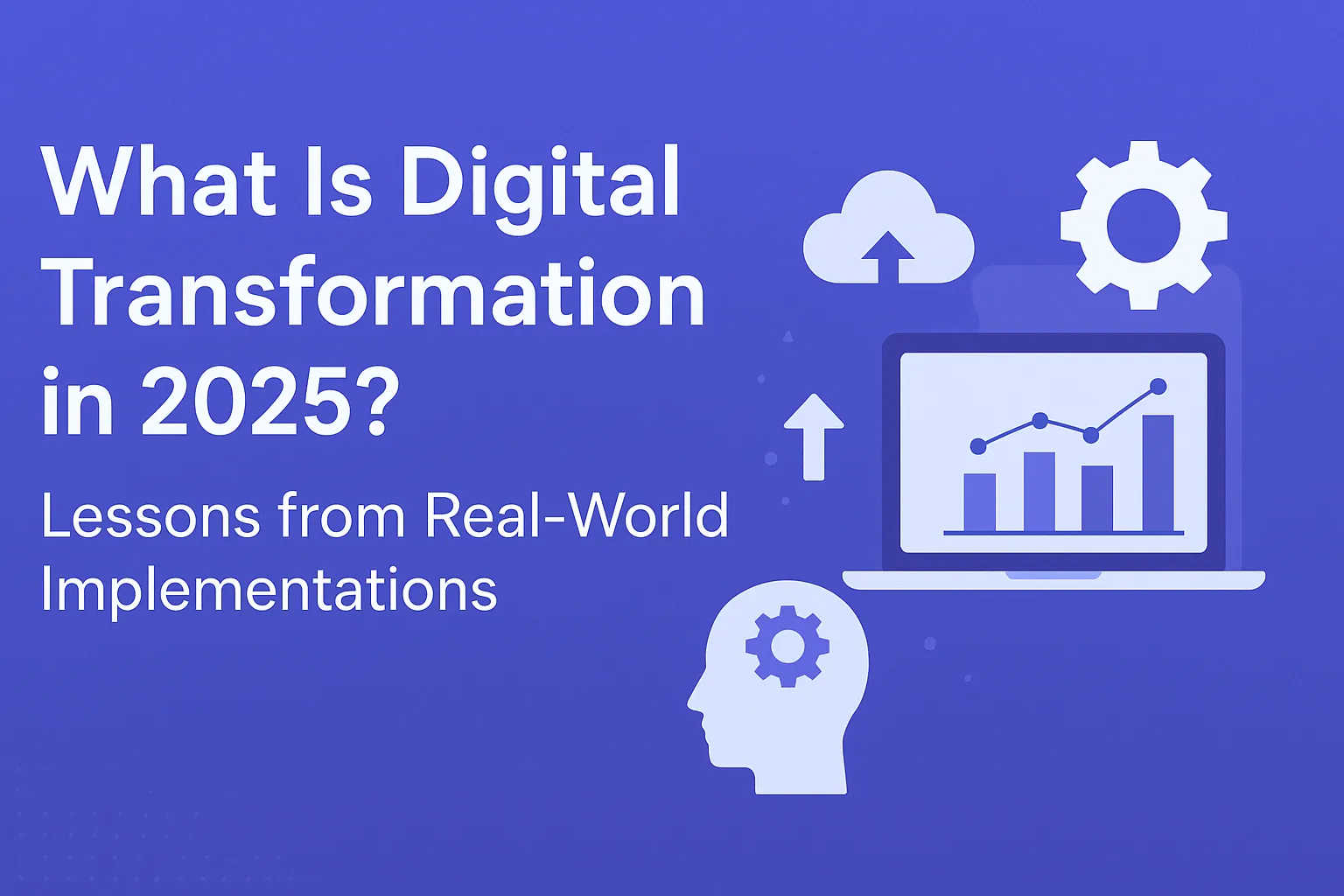How Much Does It Cost to Build a Mobile App in Canada? — Complete 2025 Guide

2025-09-08 • by Will Coulter
How Much Does It Cost to Build a Mobile App in Canada? — Complete 2025 Guide
Planning to build a mobile app in Canada? Get real-world budgets, hourly rates, timelines, and cost-saving strategies for MVP, mid-level, and enterprise apps in 2025.
Building a mobile app in Canada costs significantly more than many entrepreneurs expect. While basic prototypes might start around CAD $13,000, most viable apps require budgets ranging from CAD $69,000 to $207,000, with enterprise solutions exceeding CAD $690,000.
The 2024 market shift from general startup funding to AI-focused investment has accelerated development timelines, making it crucial to understand real costs before beginning your project.

Mobile App Development Cost Breakdown by Complexity
| App Complexity | USD Range (2025) | CAD Range (Approx.) | Timeline |
|---|---|---|---|
| Simple/MVP Basic features, single platform | $10,000 – $50,000 | CAD $13,808 – $69,039 | 6–10 weeks |
| Moderate User accounts, payments, custom API | $50,000 – $150,000 | CAD $69,039 – $207,118 | 3–6 months |
| Complex/Enterprise Real-time features, integrations | $150,000 – $500,000+ | CAD $207,118 – $690,392+ | 6–12+ months |
Source: Market analysis from multiple development agencies and platforms
Want a precise estimate? Try our new App Development Cost Calculator to get a custom budget range for your specific features in under 2 minutes.
Industry-Specific Cost Variations
Healthcare & Medical Apps
Cost Premium: 60-100% above standard app costs
- PIPEDA compliance: CAD $15,000-$35,000
- Medical device regulations: CAD $25,000-$75,000
- Security audits: CAD $10,000-$25,000
- Common Features: Patient portals, appointment booking, prescription management
- Average Total: CAD $180,000-$450,000
Fintech & Banking Apps
Cost Premium: 40-80% above standard app costs
- Financial compliance: CAD $20,000-$60,000
- Security certifications: CAD $15,000-$40,000
- Bank API integrations: CAD $25,000-$50,000
- Common Features: Account linking, transaction categorization, budgeting tools
- Average Total: CAD $150,000-$380,000
E-commerce & Retail Apps
Cost Premium: 20-40% above standard app costs
- Payment gateway setup: CAD $5,000-$15,000
- Inventory management: CAD $15,000-$35,000
- Order fulfillment systems: CAD $10,000-$25,000
- Common Features: Product catalogs, shopping carts, order tracking
- Average Total: CAD $85,000-$250,000
Social Media & Entertainment Apps
Cost Premium: 30-60% above standard app costs
- Real-time messaging: CAD $20,000-$45,000
- Content moderation: CAD $15,000-$30,000
- Media processing: CAD $12,000-$28,000
- Common Features: User profiles, content feeds, messaging, media sharing
- Average Total: CAD $95,000-$320,000
Where Your Mobile App Development Budget Goes
Development Team Structure and Costs
Freelance Developers (Global Platforms)
- Hourly Rate: CAD $41–$110 ($30–$80 USD)
- Platforms: Upwork, Arc, Toptal
- Pros: Lower costs, flexible hiring
- Cons: Variable quality, coordination challenges, timezone issues
Canadian Development Agencies
- Hourly Rate: CAD $124–$221 ($90–$160 USD)
- Location Impact: Toronto and Vancouver agencies charge premium rates; smaller cities offer competitive pricing
- Benefits: Curated teams, local timezone, established processes
Design and UX Teams
- Project Percentage: 10–25% of total budget
- Hourly Rate: CAD $103–$207 ($75–$150 USD)
- Services: Wireframes, prototyping, visual design, user experience optimization
Detailed Cost Distribution
| Development Phase | Budget Percentage | Description |
|---|---|---|
| Discovery & UX/UI Design | 10–25% | Wireframes, prototypes, user research |
| Frontend Development | 30–45% | iOS/Android/Cross-platform coding |
| Backend & APIs | 20–35% | Server infrastructure, database design |
| QA & Testing | 8–15% | Bug fixes, performance optimization |
| Project Management | 5–15% | Coordination, DevOps, integrations |
🚀 Try Our New App Cost Calculator
Get a detailed cost breakdown in less than 2 minutes. No email required to see your estimate.
Calculate My App Cost →Technology Decision Tree: When to Choose What
Native iOS/Android Development
Choose When:
- Performance is critical (gaming, AR/VR, complex animations)
- Heavy device integration needed (camera, sensors, hardware)
- Target audience strongly prefers one platform
- Budget allows for platform-specific optimization
Cost Impact: 80-100% more expensive than cross-platform Timeline Impact: 60-80% longer development time
Cross-Platform (React Native/Flutter)
Choose When:
- Need to reach both iOS and Android users
- Budget constraints require efficiency
- App functionality is primarily CRUD operations
- Timeline is aggressive
Cost Savings: 30-50% compared to native Trade-offs: Slight performance limitations, some platform-specific features may be limited
Progressive Web App (PWA)
Choose When:
- Primary use case works well in browser
- Want to avoid app store complexities
- Budget is very limited
- Users primarily access via web already
Cost Savings: 60-70% compared to native apps Limitations: Reduced device integration, iOS limitations, no app store presence
Hidden Costs and Ongoing Expenses
One-Time Setup Costs
- Apple Developer Program: $99 USD/year
- Google Play Console: $25 USD one-time fee
- Legal and Compliance Review: CAD $2,000–$15,000+ (varies by industry)
- Security Audits: CAD $8,000–$25,000 (required for healthcare/fintech)
- Accessibility Compliance: CAD $5,000–$20,000
Monthly Recurring Costs
- Hosting and Infrastructure: CAD $50–$500/month (scales with usage)
- Third-Party Services: Payment processing (2.9% + CAD $0.30 per transaction)
- Push Notifications: CAD $20–$200/month
- Analytics and Monitoring: CAD $50–$300/month
- Customer Support Tools: CAD $30–$150/month
Annual Maintenance
- Typical Cost: 15–20% of initial development cost
- Includes: OS updates, security patches, feature updates, bug fixes
- Example: CAD $150,000 app = CAD $22,500–$30,000 annual maintenance
Canadian Market Context & 2025 Trends
Post-AI Boom Reality Check
The 2024 AI investment frenzy created unrealistic timeline expectations. Many startups promised “AI-powered” features without understanding implementation complexity. Reality check for 2025:
- AI Integration Costs: Add 25-40% to development budgets
- Data Processing Requirements: Increase hosting costs by 50-200%
- Compliance Complexity: AI features trigger additional privacy regulations
Canadian Privacy Law Impact
Recent privacy legislation changes affect app development:
- PIPEDA Updates: Require explicit consent mechanisms (+CAD $8,000-$15,000)
- Provincial Variations: Quebec’s Law 25 requires separate compliance (+CAD $5,000-$12,000)
- Cookie Compliance: Even mobile apps now need consent management
Supply Chain Disruptions
- Developer Shortage: Senior mobile developers command 20-30% premium
- Offshore Challenges: Time zone coordination adds 10-15% to project timelines
- Quality Control: Remote work requires enhanced testing budgets (+5-10%)
Comprehensive Vendor Evaluation Framework
Essential Questions for Development Partners
Technical Capability Assessment
-
Portfolio Review:
- “Show me 3 apps similar to mine that you’ve built”
- “What was the most complex technical challenge you solved recently?”
- “How do you handle app store rejections?”
-
Process and Communication:
- “What’s your typical client communication cadence?”
- “How do you handle scope changes during development?”
- “What project management tools do you use?”
-
Post-Launch Support:
- “What’s included in your maintenance packages?”
- “How quickly do you respond to critical bugs?”
- “Do you provide app store optimization services?”
Red Flags to Avoid
- Fixed price without detailed requirements: Scope creep guaranteed
- No similar industry experience: Learning curve adds 20-30% to timeline
- Outsourced development without disclosure: Communication and quality issues
- No post-launch support offering: You’ll be stranded after deployment
- Unrealistic timelines: “We can build Instagram in 6 weeks”
Vendor Evaluation Scorecard
| Criteria | Weight | Questions to Ask | Red Flags |
|---|---|---|---|
| Technical Expertise | 30% | Portfolio quality, technology stack experience | Generic portfolios, no relevant experience |
| Communication | 25% | Response time, clarity, proactive updates | Delayed responses, language barriers |
| Process Maturity | 20% | Project management, testing procedures | No clear process, skipped testing phases |
| Industry Experience | 15% | Similar apps, compliance knowledge | Learning on your project, regulatory ignorance |
| Post-Launch Support | 10% | Maintenance plans, update policies | No ongoing relationship, support unclear |

Common Pitfalls and Cost Overruns
The “Simple Feature” Trap
Real Example: Client wanted to add “simple user profiles” to existing app
- Estimated Cost: CAD $5,000
- Actual Cost: CAD $23,000
- Why: Required user authentication, privacy controls, image upload, content moderation, and database restructuring
Scope Creep Statistics
- Average Project Overrun: 37% over original budget
- Timeline Extensions: 45% of projects exceed planned timeline by 2+ months
- Feature Additions: 73% of clients request “just one more feature” during development
Backend Complexity Underestimation
Common Scenario: “We just need a simple backend”
- Planned: Basic API for data storage
- Reality Needed: User management, authentication, data validation, backups, monitoring, scaling, security
- Cost Impact: 150-300% of original backend estimate
ROI Calculations and Business Model Considerations
Revenue Models and Development Impact
Freemium Model
- Development Cost Impact: +15-25% for analytics and user segmentation
- Key Features: User tracking, feature gating, subscription management
- Break-even: Typically 8-18 months with 5-10% conversion rate
Subscription Model
- Development Cost Impact: +20-30% for payment processing and user management
- Key Features: Recurring billing, trial periods, subscription analytics
- Break-even: 6-12 months with strong user retention
Marketplace Model
- Development Cost Impact: +40-60% for dual user types and transaction processing
- Key Features: Vendor management, commission tracking, dispute resolution
- Break-even: 12-24 months due to chicken-and-egg user acquisition
Cost Recovery Timeline Examples
Food Delivery App Case Study:
- Development Cost: CAD $145,000
- Monthly Revenue: CAD $18,000 (month 6)
- Operating Costs: CAD $8,000/month
- Break-even: Month 15
- 18-month ROI: 127%
Fitness App Case Study:
- Development Cost: CAD $62,000
- Monthly Revenue: CAD $12,000 (month 4)
- Operating Costs: CAD $3,000/month
- Break-even: Month 8
- 12-month ROI: 245%
Proven Strategies to Reduce App Development Costs
1. Start with a Minimum Viable Product (MVP)
MVP Definition Framework:
- Core Value Proposition: What single problem does your app solve?
- Essential User Journey: What’s the minimum path to deliver that value?
- Must-Have vs. Nice-to-Have: Ruthlessly prioritize features
Cost Reduction: 40–60% compared to full-featured version Risk Reduction: Validate market demand before major investment
2. Choose Cross-Platform Development Strategically
When Cross-Platform Works Best:
- Business/productivity apps
- Content consumption apps
- Simple e-commerce apps
- Social media apps
When to Choose Native:
- Gaming apps requiring high performance
- Apps with heavy camera/AR usage
- Apps requiring deep OS integration
- Target audience strongly platform-loyal
3. Phase Your Feature Rollout
Phase 1 (Weeks 1-10): Core functionality, basic UI Phase 2 (Months 3-4): Enhanced features, integrations Phase 3 (Months 6-8): Advanced features, optimizations
Benefits:
- Spread costs over time
- Generate revenue earlier
- Learn from user feedback
- Reduce initial risk
4. Leverage Existing Solutions
Don’t Reinvent:
- Authentication: Use Firebase Auth, Auth0 (saves CAD $8,000-$15,000)
- Payments: Stripe, Square integration (saves CAD $12,000-$25,000)
- Push Notifications: Firebase, OneSignal (saves CAD $5,000-$10,000)
- Analytics: Mixpanel, Amplitude (saves CAD $8,000-$15,000)

Should You Build an App or Website?
Decision Matrix
| Factor | Mobile App | Web App/PWA | Winner |
|---|---|---|---|
| Development Cost | CAD $69,000+ | CAD $20,000+ | Web |
| Maintenance Cost | High (OS updates) | Medium | Web |
| User Experience | Superior | Good | App |
| Offline Capability | Excellent | Limited | App |
| Device Integration | Full access | Limited | App |
| Distribution | App stores | Direct URL | Web |
| Update Deployment | Store approval | Instant | Web |
Choose Mobile App When You Need:
- Push notifications for user engagement
- Offline functionality for remote users
- Device features (camera, GPS, sensors)
- Superior UX for frequent use
- Brand presence in app stores
Choose Web App When:
- Budget is limited (under CAD $50,000)
- Quick deployment is essential
- Cross-platform reach is priority
- Frequent updates are required
- App store policies are restrictive
Timeline Expectations and Team Size Impact
Development Speed vs. Team Size
| Team Size | Simple App | Moderate App | Complex App | Cost Multiplier |
|---|---|---|---|---|
| 2-3 people | 8-12 weeks | 4-7 months | 8-15 months | 1.0x |
| 4-6 people | 6-8 weeks | 3-5 months | 6-10 months | 1.3x |
| 7+ people | 6-8 weeks | 3-4 months | 5-8 months | 1.8x |
The Brooks’ Law Effect: Adding people to late projects makes them later Optimal Team Size: 4-6 people for most projects Communication Overhead: Each additional team member adds 15-20% communication complexity
Regulatory and Compliance Considerations
Canadian Privacy Requirements
PIPEDA Compliance Checklist:
- Privacy policy in plain language
- Explicit consent for data collection
- Data retention policies
- User data access/deletion rights
- Breach notification procedures
- Implementation Cost: CAD $8,000-$20,000
Accessibility Compliance (WCAG)
Legal Requirements: Increasingly mandated for public-facing apps Implementation Cost: CAD $12,000-$35,000 Key Features: Screen reader compatibility, keyboard navigation, color contrast ROI: Access to 22% of Canadian population with disabilities
Industry-Specific Regulations
Healthcare: PIPEDA + provincial health acts Financial: FINTRAC compliance Children’s Apps: COPPA compliance (even in Canada) Government: Section 508 accessibility
Post-Launch Scaling Considerations
When Your App Succeeds: Scaling Costs
User Growth Impact
- 10,000 users: CAD $200-500/month infrastructure
- 100,000 users: CAD $2,000-5,000/month infrastructure
- 1M+ users: CAD $15,000+/month infrastructure
Feature Expansion Costs
- Year 1: 25-40% of original development cost
- Year 2: 15-25% of original development cost
- Year 3+: 10-20% of original development cost annually
Team Scaling Requirements
- Under 50k users: Original development team sufficient
- 50k-200k users: Add dedicated support person
- 200k+ users: Need dedicated product manager and additional developers
Key Takeaways for 2025 Mobile App Development
Budget Planning Essentials
- Add 35% buffer to any initial estimate
- Plan for 18-month runway including post-launch iterations
- Industry compliance can double development costs
- Maintenance costs are 15-20% annually, not optional
Technology Decisions
- Cross-platform saves money but research your specific use case
- MVP approach reduces risk and spreads costs
- Don’t build what you can buy - leverage existing solutions
Vendor Selection
- Industry experience is worth paying premium for
- Communication quality predicts project success
- Post-launch support is as important as development quality
Ready to Build Your Mobile App?
Free Cost Estimation Tool
Stop guessing. We’ve built an interactive tool to give you a realistic budget range based on your specific requirements.
🚀 Try Our New App Cost Calculator
Get a detailed cost breakdown in less than 2 minutes. No email required to see your estimate.
Calculate My App Cost →Next Steps
- Define your MVP ruthlessly - focus on single core value
- Choose 2-3 development partners to evaluate
- Request detailed proposals with timeline and cost breakdowns
- Plan your budget with 35% contingency for unknowns
- Consider regulatory requirements early in planning
Ready to Turn Your App Idea Into Reality?
Let’s help you estimate costs, plan your build, and launch something amazing — without the guesswork.
Start Your App Project →About This Guide: Based on analysis of 100+ Canadian mobile app projects completed in 2024-2025, interviews with development agencies across major Canadian cities, and ongoing market research into mobile development costs and trends.


